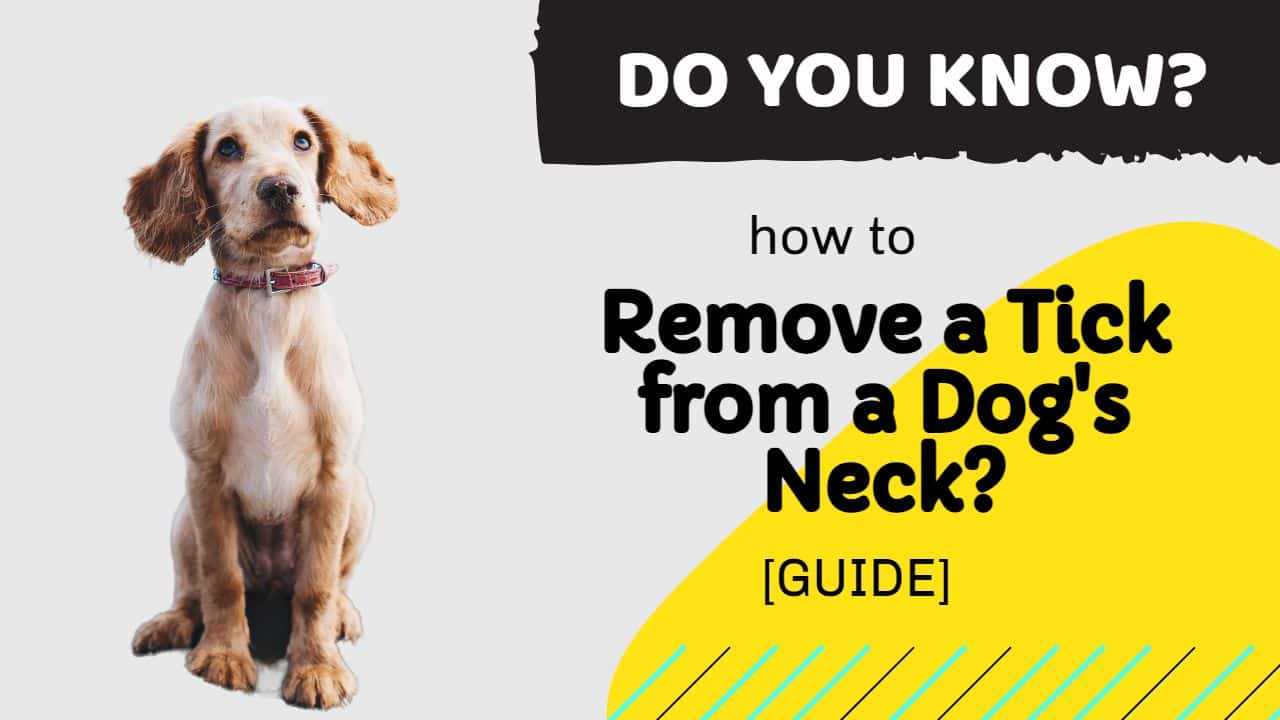Tick removal is not a simple task, especially if it’s your first time. If you’re not careful, you might cause the tick to drive its head in deeper and get infected.
Ticks carry diseases that can be contagious – like Lyme disease and Rocky Mountain spotted fever.
Here you will find step by step instructions for how to safely remove the tick from your dog’s neck.
Introduction: What are Ticks and Why Should you Remove Them?
Ticks are blood-sucking pests that can make your pet very sick. Ticks are most commonly found in wooded and grassy areas, where they wait for a host to come by. They can attach themselves to your pet’s skin and feed on the animal’s blood.
There are many different types of ticks, but the most common type is the American dog tick or deer tick. They are often brown to reddish brown in color with a dark spot near their head.
The ticks will remain attached until they have had enough blood and then they will drop off, usually within 24 hours of being attached to your dog or cat.
Remove ticks from your dog’s neck as soon as possible when you find them because they can transmit diseases such as Lyme disease.
How to Find and Remove a Tick from a neck of a dog
There are many methods for removing ticks from a dog’s neck. Some people use tweezers, others use a tick removal tool, and others use their fingers.
The most important thing is to get the head of the tick as close to the surface of the skin as possible. It is important to remove the head of the tick in a way that leaves no part of it on or below the skin.
This can be done with fingernails, tweezers, or a credit card. If a tick is embedded in fur, you might need to cut off some of the fur close to where it attaches to the scalp and then pull up.
This will make it easier to remove it with minimal damage to your pet.
If your pet is small and you are able to get a good grip on the head, hold the tick in one hand and use the other hand to remove it with a twisting motion. If this doesn’t work, try grabbing the tick by its body or legs.
Tick Prevention Tips for Dogs
Dogs are a beloved part of the family and it is important to keep them safe. It is crucial to be aware of ticks and how they can affect your dog. Here are some tick prevention tips for dogs:
- Check your dog daily for ticks
- Use a flea and tick collar or other treatment
- Keep grass cut low in your yard
- Clean up any leaves or brush that might have fallen on the ground
Conclusion: The Importance of Proper Tick Removal Techniques on Your Dog
When it comes to removing ticks from your dog, there are a few things you should do to make sure that you are doing it the right way.
First, be careful not to pull the tick straight out of your dog’s skin! This can cause the head of the tick to break off and remain in their skin. Instead, use a pair of fine-tipped tweezers and gently pinch the tick’s head between them before pulling it out.
Next, after removing a tick from your dog’s skin, place it in a jar or plastic bag and take it with you to show your vet so they can identify what type of tick it is. They will also be able to tell if there is any chance that this particular type of tick carries Lyme disease or other diseases.
FAQ’s
What should I do if my dog has a tick on them?
If you find a tick on your dog, the first thing you should do is to remove it. If the tick is not engorged yet, you can use tweezers to grasp the tick and pull it out. But if the tick is engorged, you should use a pair of needle-nose pliers or a tick removal tool to get rid of it.
After removing the tick, clean the area with soap and water or alcohol. You can also apply an antibiotic ointment if there are any signs of infection.
What is the best way to remove a tick from your dog’s neck?
Some people may not know that you can use Vaseline to remove a tick from your dog’s neck. This is because it is easy to apply and it will not irritate the skin. You just need to put some on your fingers and rub it around the tick’s head. Then, slowly pull the tick out of the skin.
What are the risks of not removing the tick?
Ticks are a sign of an infestation of bloodsucking insects. They can cause complications such as skin irritation, allergic reactions, and Lyme disease.
Many people don’t know that ticks can transmit diseases to humans.
If you are bitten by a tick and it is not removed, the tick will continue to feed on your blood for up to 48 hours. This increases the risk of contracting a disease from the tick bite.


